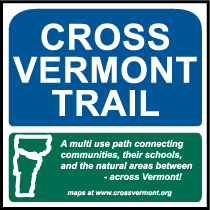From Road.cc
British Cycling policy advisor Chris Boardman says it’s time for the cycling community to put the debate about mandatory cycle helmets to bed and get across the message that helmet use is one of the least important cycling safety measures.
Even talking about making helmets mandatory “massively puts people off” cycling, Boardman said, and likened the culture of helmet use among keen cyclists to people wearing body armour because they have got used to being shot at.
Talking to road.cc at the London Bike Show, Boardman said, “I think the helmet issue is a massive red herring. It’s not even in the top 10 of things you need to do to keep cycling safe or more widely, save the most lives.”
You’re being shot at, put on body armour
Boardman returned to an analogy he has made before, and which even he admits is a bit melodramatic, though it gets the point across
“It’s a bit like saying ‘people are sniping at you going down this street, so put some body armour on,’” he said.
Government encouragement to wear helmets was therefore “a big campaign to get people to wear body armour, by the people who should be stopping the shooting.”
Widespread use of helmets, he said, sends the wrong message.
“Once you see somebody wearing body armour, even if there’s no shooting, you think ‘Christ I’m not going down there if they’re wearing body armour to go down that street.’ It scares people off.”
There’s a better solution to the problem of cycle safety, Boardman said. In the Netherlands, just 0.8 percent of cyclists wear helmets yet the Dutch have the lowest rate of cycling head injury, thanks to segregated cycling infrastructure. Thirty percent of journeys in the Netherlands are made by bike, he said, and 50 percent of children’s journey to school.
”The best way to deal with [the head injury issue] is what the Dutch have done,” he said. “Where you have the Highest rate of helmet use, you also have the highest rate of head injury: us and the US.”
Yet there’s also an almost-fanatical, knee-jerk devotion to helmet use among enthusiast and sporting cyclists.
Boardman said: “People who are wearing body armour get used to being shot at, when it’s the getting shot at that’s the problem.”
A distraction
Talking about helmets had become a time-consuming distraction, he said. “We’ve got to tackle the helmet debate head on because it’s so annoying,” he said. “It gets a disproportionate amount of coverage. When you have three minutes and someone asks ‘Do you wear a helmet’ you know the vast majority of your time when you could be talking about stuff that will make a difference, is gone.”
He said the focus on helmets had made cycling seem more dangerous than it really is.
“We’ve gone away from the facts,” he said. “We’ve gone to anecdotes. It’s like shark attacks - more people are killed building sandcastles than are killed by sharks. It’s just ludicrous that the facts aren’t matching up with the actions because the press focus, naturally, on the news stories, and [the notion that cycling is dangerous] becomes the norm, and it isn’t the norm.
“You can ride a thousand times round the planet for each cycling death. You are safer than gardening.”
Cycling’s image
Like many cycling advocates, Boardman wants to see cycling presented as a normal, everyday activity.
“I saw two people riding down the hill to my village. One person coming down the hill to go for the train in high-viz, helmet on.
“A few moments later another guy came down, in shirt sleeves, with a leather bag on his back, just riding his bike to the station.
“Which one of those makes me want to [ride]?”





